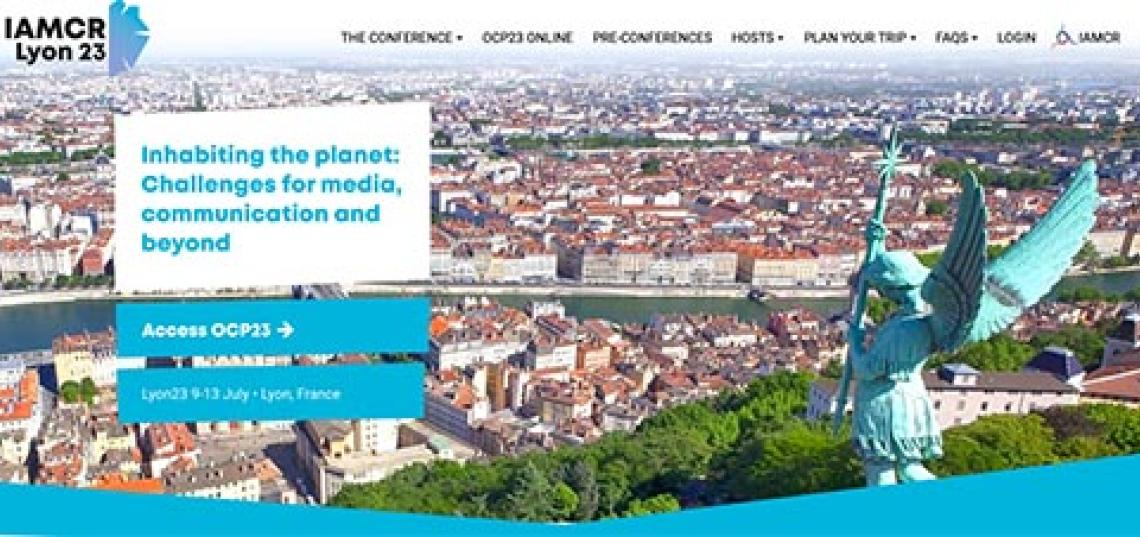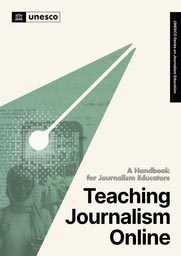
A new UNESCO publication, “Teaching Journalism Online: A Handbook for Journalism Educators,” co-edited by SC&I Professor of Journalism and Media Studies Susan Keith and Professor Raluca Cozma of Kansas State University, will officially launch on Monday, July 10, 2023 at the International Association for Media and Communication Research (IAMCR) conference, “Inhabiting the Planet: Challenges for Media, Communication, and Beyond,”being held this year in Lyon, France.
The handbook will be launched as one of two new online UNESCO resources for journalism educators during a special session of the conference titled “Teaching Journalism Today.”
Describing the handbook as “a valuable resource for any journalism teacher using technology to amplify their reach,” Keith and Cozma wrote in the handbook’s summary, “this manual aims to provide journalism instructors the resources to improve their teaching in digital spaces.”
The challenge for journalism educators to teach in online formats, they added, “was accelerated with COVID-19, and the trend can be expected to continue. Journalism education, being heavily focusing on experiential learning and face-to-face interaction, is particularly challenged when it comes to remote teaching and learning.”
 The handbook includes specific, practical, hands-on advice to post-secondary journalism instructors including: “planning a new online course from scratch or transitioning an existing face-to-face course to online delivery; strategies to curb academic dishonesty in online courses; creating a student-centered learning environment; ways to support diversity in the virtual classroom; and the future of online journalism education, drawing on what the pandemic period has taught.”
The handbook includes specific, practical, hands-on advice to post-secondary journalism instructors including: “planning a new online course from scratch or transitioning an existing face-to-face course to online delivery; strategies to curb academic dishonesty in online courses; creating a student-centered learning environment; ways to support diversity in the virtual classroom; and the future of online journalism education, drawing on what the pandemic period has taught.”
The handbook’s contributors, who were invited to submit chapters and all have experience teaching fully online courses, are from Australia, Chile, China, Egypt, Ghana, Ireland, Mexico, Qatar, and the U.S.
The handbook includes a forward written by Guy Berger, former secretary of UNESCO’s International Programme for the Development of Communication.
Divided into three parts, the manual covers “getting your course online”; “the human side of online teaching,” “challenges in online teaching,” and “the future of online journalism education.”
“The handbook’s chapters,” Keith and Cozma wrote, “have also been conceptualized to appeal to more-experienced online instructors looking to improve their teaching in digital spaces or overcome common problems related to teaching journalism online.”
In addition to Keith, two other members of the SC&I community will attend the IAMCR conference next week. Professor of Journalism and Media Studies Deepa Kumar will present “Terrorcraft as Ideology: The Cultural Production of the Racialized Terrorist,” and SC&I Ph.D. student Melissa Gasparotto will present “Language ideologies and technology development: results from a systematic review” (an INC/ESN joint session).
Discover more about the Journalism and Media Studies Department and the Ph.D. Program on the Rutgers School of Communication and Information website.
Images:
(top): International Association for Media and Communication Research (IAMCR)
Book cover: Courtesy of Susan Keith
